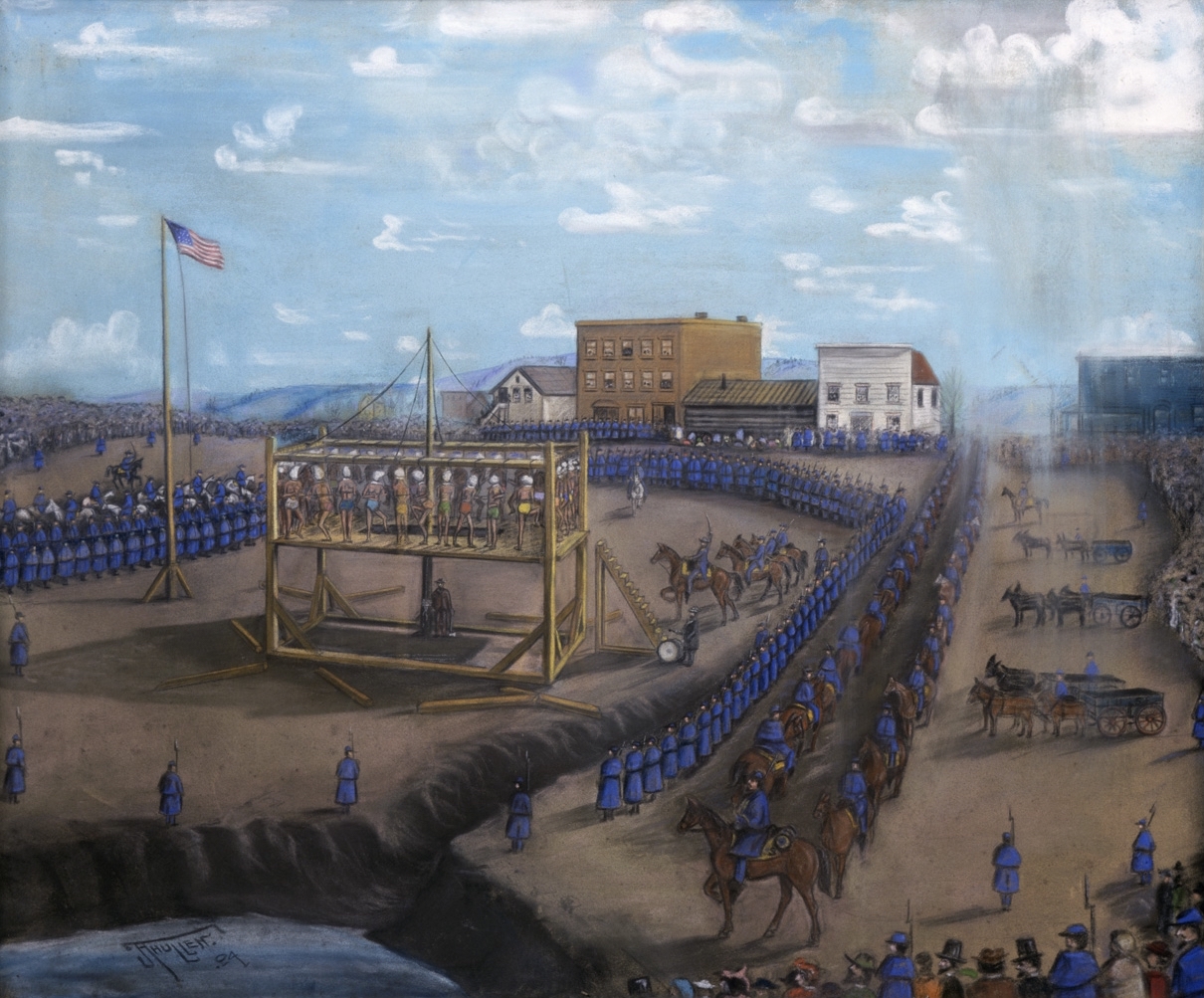By James Giago Davies
Native Sun News Today Contributing Editor
NEW ULM, Minnesota — Getting a clear picture of what actually happened in Minnesota starting on August 17, 1862, is becoming increasingly difficult given the misperceptions sure to form between historical revision and historical negation.
Historical revision can be a positive thing, as when what happened at Wounded Knee in 1890 is relabeled a massacre and not a battle. By calling it a battle, the soldiers are turned into hero warriors, but by relabeling it a massacre, which a fair minded scrutiny of the historical record reveals, the blame falls upon the government as perpetrator, and renders the act, heinous.
Sometimes the historical record is deliberately distorted for whatever unprincipled agenda drives the historian to distort. This practice is also often called historical revision, when it is more accurately described as historical negation. A prime example would be asserting the American Civil War was not about slavery, but economics. Certainly it was about economics, mainly the economics of slavery, which is why nearly every secession document submitted to Congress by the states of the Confederacy cites slavery as the number one reason for secession.
The conflict between the Dakota and the white settlers in Minnesota has many names: Sioux Uprising, Little Crow’s War, the Dakota War of 1862, and all of these labels serve to distort the historical perception of that conflict. Uprising is a rebellion against legitimate authority, something treacherous savages are said to do. Was this conflict a war? It was not perceived as such by the United States, or they would not have ordered the trial and execution of over 300 Dakota. To avoid confusion, from this point on, we will refer to it as the Conflict.
 A depiction of the December 26, 1862, mass hanging of 38 Dakota men in Mankota, Minnesota, dated to 1884. Image: J. Thullen
A depiction of the December 26, 1862, mass hanging of 38 Dakota men in Mankota, Minnesota, dated to 1884. Image: J. Thullen
Both historical revision and historical negation apply to the
1862 Conflict. Revisionist historians are correct in asserting it was not an “uprising,” but a war, even if not recognized as war by the United States at the time. But historical negation has attempted to absolve the Dakota of any culpability for the deaths of hundreds and hundreds of people, while at the same time painting Lincoln out to be a cruel, cold-blooded enemy of Dakota people, who wantonly ordered the largest one-day mass execution in US history.
While much of the history of conflict between tribes and the European invaders requires massive, critical revision, unprincipled attempts at historical negation poorly serve that cause.
The prime example of the historical negation takes the form of an internet rumor, or eRumor. On the surface, many still scoff at the internet through the prism of 20th Century sensibility and discernment, not factoring in how profoundly daily internet activity now shapes our opinion and perception of reality. The eRumor consists of a
photograph, allegedly of 39 men ordered to be executed by President Lincoln, for
“treaty violations (hunting off their assigned reservation)”.
In reality, Lincoln ordered 38 men executed, the 39th received a last second reprieve because late arriving testimony convinced the court of his innocence. That they were executed for violating treaty hunting restrictions is a blatant lie. Some have asserted even the picture of the men about to be hanged is not of the 38 actually hanged, but this is probably false.
There appear to be 38 men present on the scaffold and the assertion that “the men in the photo are dressed like Europeans, not Dakota. It’s highly unlikely that Minnesotans would have given Dakota men new pants, vests and coats before their execution,” doesn’t hold water. Looking at the photo yields no concrete evidence the men are dressed in anything but the rough clothes of the day.
The attempt by historical negationists to paint Lincoln as a villain is not borne out by the record or by the tenor of the time.
But before looking at the factors that led to Lincoln’s execution order, what actually happened during late August, 1862 to cause the Conflict?
The Dakota were living in dire hardship. Treaty obligated supplies had not arrived and would in any event be withheld by the Indian Agent until he could be properly paid for distribution. The supplies did arrive but too late before violence commenced.
James Giago Davies is an enrolled member of the Oglala Lakota tribe. He can be reached at skindiesel@msn.com
Copyright permission
Native Sun News Today
Join the Conversation
Related Stories
'A
true story from Dakota eyes': Shakopee Tribe shares its culture with the world
(September 30, 2019)



